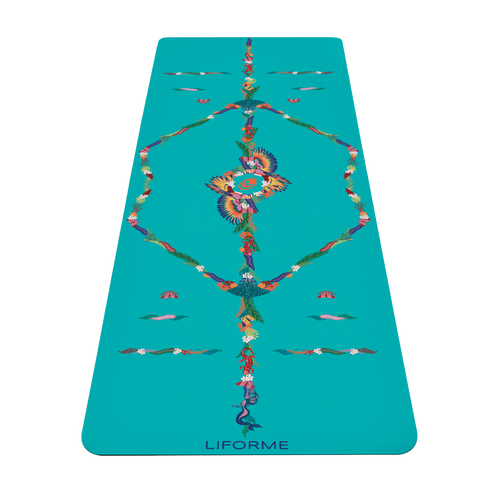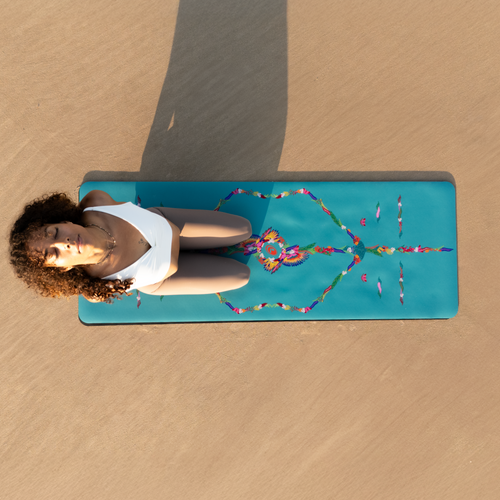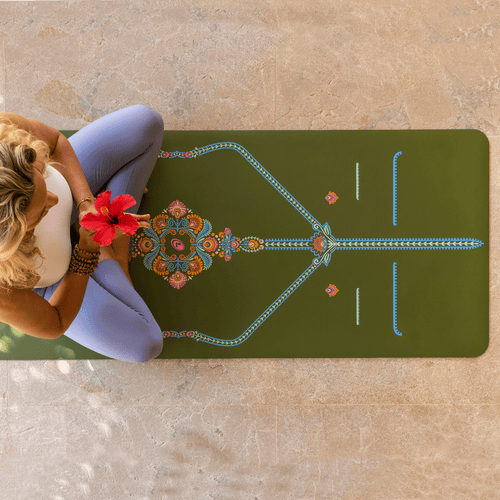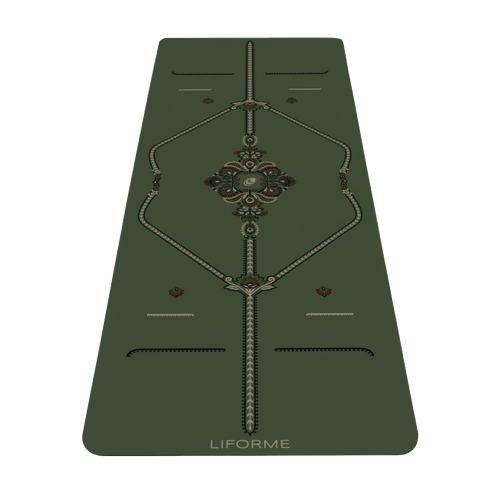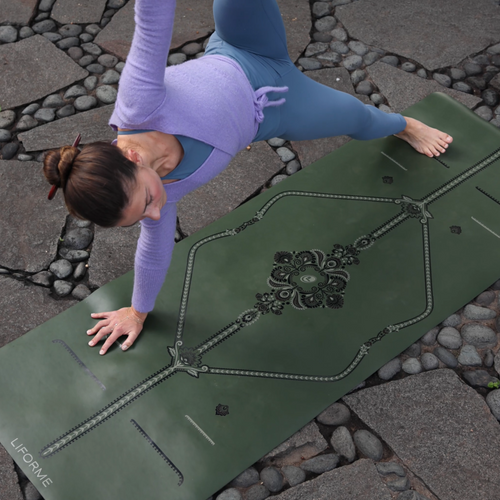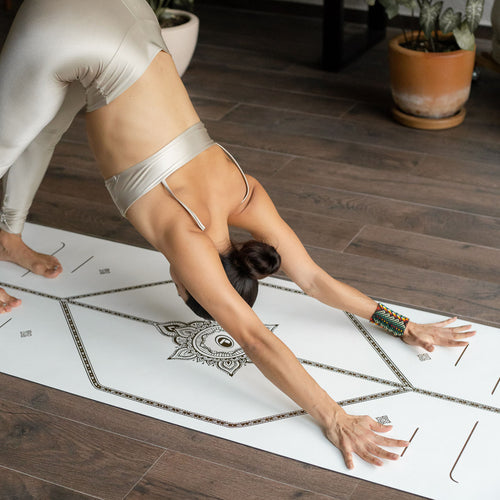Supta means reclined or supine in Sanskrit, so whenever you hear this word in class, expect to lie down on your back. Often this position indicates a restorative posture that uses gravity to encourage passive stretching. However, supine poses aren’t always easy. Reclined versions of seated poses can intensify the sensations of stretching. Make use of props like bolsters and blankets for support to help you explore the edges of discomfort safely.
Supine Poses

Supine Bound Angle Pose (Supta Baddha Konasana)
Sanskrit Meaning: Supta (Supine) Baddha (Bound) Kona (Angle) Asana (Pose)
Yoga Level: Beginner
Benefits: Opens the groin and inner thighs.
Props: Blocks
Step-by-Step:
1. Begin in Baddha Konasana with the soles of your feet touching and your knees open to either side.
2. Lean back to come onto your elbows and then all the way to lie down on your back.
3. A block under each knee can offer extra support.

Eye of the Needle Pose (Sucirandhrasana)
Sanskrit Meaning: Suci (Needle) Randhra (Hole) Asana (Pose)
Also Known As: Reclined Pigeon
Yoga Level: Beginner
Benefits: This hip opener is a gentler alternative to Pigeon Pose because it allows you to control the intensity of the stretch.
Step-by-Step:
1. Lie down on your back with both knees bent and the soles of your feet on the floor.
2. Place your left ankle to the top of your right thigh near your right knee.
3. Reach your left arm through the space under your left knee and your right arm around the outside of your right thigh to meet under your right thigh.
4. Flex your right foot and bring your right shin parallel to the floor.
5. Gently draw your right thigh toward your chest to open your left hip.

Supine Hand to Big Toe Pose A (Supta Padangusthasana A)
Sanskrit Meaning: Supta (Supine) Padangustha (Big Toe) Asana (Pose)
Yoga Level: Beginner
Benefits: A stretch for your hamstrings and calves.
Props: Strap
Step-by-Step:
1. Lie down on your back with both legs outstretched.
2. Hug your right knee in towards your chest.
3. Either take hold of your right big toe with the first two fingers of your right hand or place a strap around the ball of your foot instead.
4. Straighten your right leg, taking the sole of your foot to face the ceiling. If you can’t straighten your leg fully while holding your toe, use the strap around your instep since you won’t get the full hamstring stretch if you keep your leg bent.
5. Keep your left leg engaged by flexing that foot.
6. Keep your head and shoulder on the floor.

Supine Hand to Big Toe Pose B (Supta Padangusthasana B)
Sanskrit Meaning: Supta (Supine) Padangustha (Big Toe) Asana (Pose)
Yoga Level: Beginner
Benefits: Stretch your hamstrings, calf, groin, and inner thigh.
Props: Strap
Step-by-Step:
1. From Supta Padangusthasana A (see above), take your strap into your right hand and open your right leg to the right.
2. Place your left hand on your left hip point to make sure that your pelvis stays flat on the mat.

Supine Spinal Twist (Supta Matsyendrasana)
Sanskrit Meaning: Supta (Supine) Lord of Fishes (Matsyendra) Asana (Pose)
Yoga Level: Beginner
Benefits: Stretches your chest, glutes, and obliques.
Props: Blanket
Step-by-Step:
1. Begun by lying down on your back with your legs outstretched.
2. Hug your right knee into your chest.
3. Bump your hips over to the right side an inch or two.
4. Guide your right knee across your body to the left side of your mat.
5. Bring both arms into a T position.
6. Keep your right shoulder grounded on the mat, even if that takes your right knee away from the floor. Use a blanket under your right knee if necessary.

Reclined Hero Pose (Supta Virasana)
Sanskrit Meaning: Supta (Supine) Vira (Hero) Asana (Pose)
Yoga Level: Intermediate
Benefits: A stretch for your quads, shins, and the tops of the feet.
Props: Block
Step-by-Step:
1. Come to sit in Hero Pose, a kneeling position with the tops of your feet flat on the floor and your sit bones on the floor between your feet. If this position puts strain on your knees, place a block under your seat.
2. Lie back and come to your elbows. If you’re sitting on a block or your knees are coming off the floor, you’ll stay here.
3. If you have some more room, you can lie all the way down on your back.
4. After several breaths, come up onto your elbows again as you sit up.

Reclined Lotus Pose (Supta Padmasana)
Sanskrit Meaning: Supta (Supine) Padma (Lotus) Asana (Pose)
Yoga Level: Advanced
Benefits: Opens your hips and abdominals.
Step-by-Step:
1. From Lotus Pose, lean back and come onto your elbows. If your knees start to come up, stay here.
2. Continue to recline until you are lying on your back.
3. Draw your belly in and press into your low back.
Variations on a Theme
You may have noticed these supine poses have something in common: there are variations on a seated or standing pose. Sometimes, as in Supine Hand to Big Toe Pose, taking the pose to the floor allows you to focus on alignment without worrying about balance. Sometimes, as in Reclined Hero, leaning back intensifies the stretch. Taking postures into different planes of space expands your body awareness and adds variety to your yoga toolbox.












